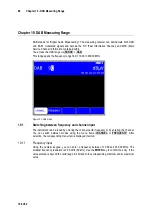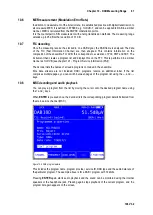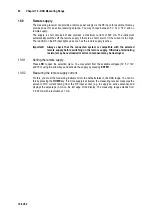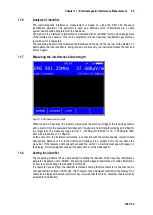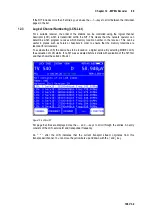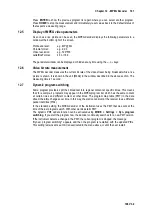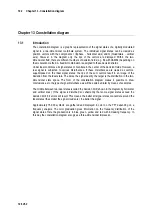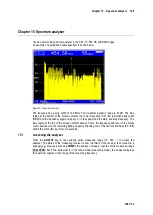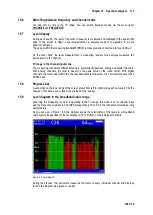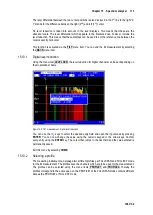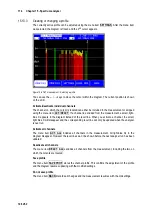
102 Chapter 13 - Constellation diagram
106 V3.2
Constellation diagram
Chapter 13
13.1
Introduction
The constellation diagram is a graphic representation of the signal states of a digitally modulated
signal in a two-dimensional coordinate system. The individual signal states can be viewed as
position vectors with the components I (Inphase - horizontal axis) and Q (Quadrature - vertical
axis). However, in the diagram only the tips of the vectors are displayed. Within the two-
dimensional field, there are different numbers of decision fields (e.g. 64 with QAM64) depending on
the modulation method. A fixed bit combination is assigned to these decisions fields.
Under ideal conditions all signal states concentrate in the center of the decision fields. However, a
real signal is subjected to various disturbances. If these disturbances are viewed as vectors,
superimposed on the ideal signal states, the tips of the sum vectors result in an image of the
deviation from the ideal state. The worse the signal quality, the larger is the distribution in the two-
dimensional state space. The form of the constellation diagram makes it possible to draw
conclusions as to the type of signal disturbance, as will be explained later by means of examples.
The middle between two ideal states is called the decision limit (shown in the diagram by horizontal
and vertical lines). If the signal is disturbed so vehemently that some signal states exceed the
decision limit, bit errors will result. This means: the better all signal states concentrate around the
ideal states (the smaller the signal clouds are), the better the signal.
Approximately 15,000 symbols are gathered and displayed in color on the TFT depending on a
frequency analysis. The color graduation gives information on the frequency distribution of the
signal states. Here the graduation is in blue, green, yellow and red with increasing frequency. In
this way the constellation diagram also gives a three-dimensional impression.

